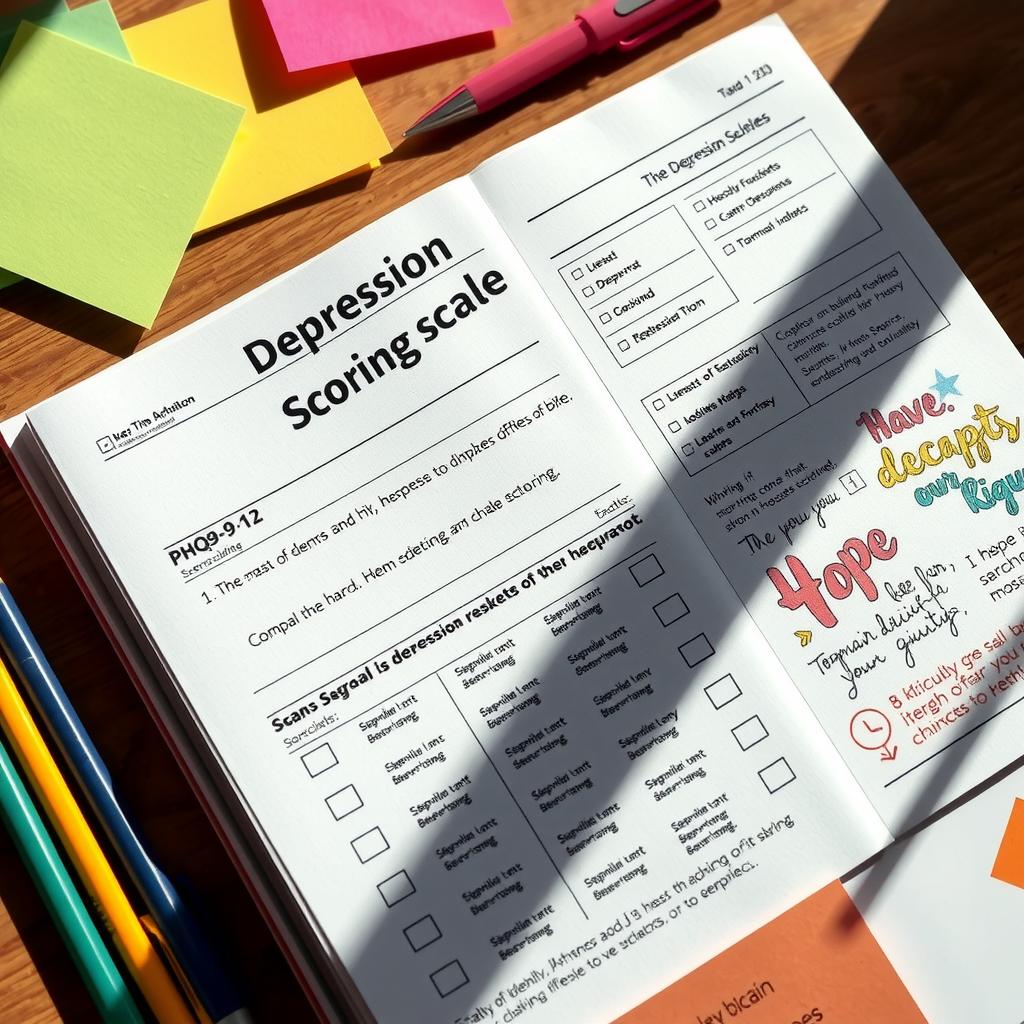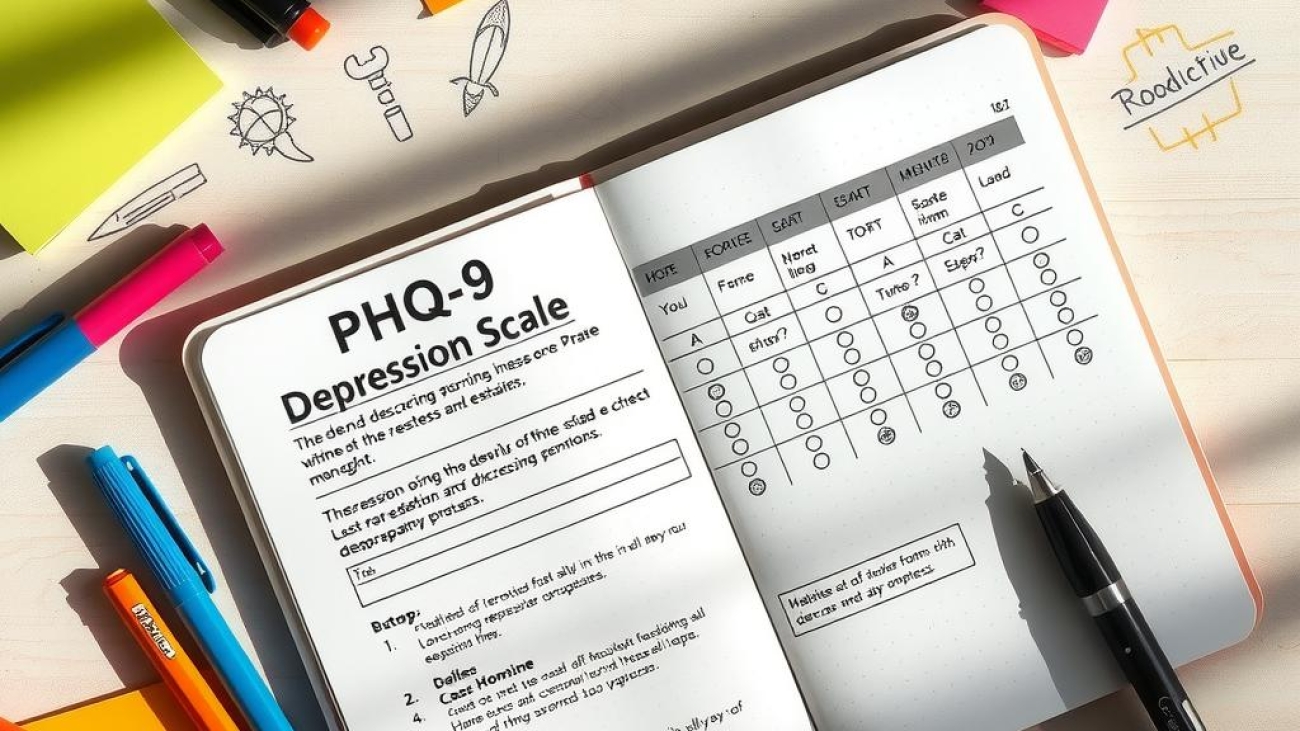In a world where mental health is increasingly recognized as a crucial aspect of overall well-being, understanding the tools available for assessing psychological conditions becomes imperative. One such tool, the PHQ-9, stands out as an effective depression scale that many healthcare professionals rely on to gauge the severity of depressive symptoms in individuals. But how does this assessment work? What are its scoring nuances? As mood disorders become more prevalent and awareness grows around their impacts, particularly post-pandemic, knowing how to accurately interpret results from tools like the PHQ-9 can empower both patients and providers alike.
This detailed scoring guide aims to demystify the PHQ-9—a widely used screening tool designed not just for diagnosis but also for monitoring treatment progress over time. By breaking down each question within this depression assessment, readers will gain insight into what constitutes different levels of depression severity and how these insights can inform clinical decisions. The value of understanding this scale extends beyond mere numbers; it plays a vital role in fostering open discussions about mental health between individuals and their care teams.
Moreover, with increasing conversations surrounding mental wellness in various settings—from schools to workplaces—the relevance of accurate psychological evaluation cannot be overstated. Familiarity with the PHQ-9 equips readers with knowledge that could bridge gaps in communication regarding emotional struggles they or someone close may face.
As we delve deeper into this guide on scoring methodologies associated with the PHQ-9, readers will uncover practical examples illustrating how responses translate into actionable insights within therapy sessions or self-assessments at home. Understanding these intricacies fosters a proactive approach toward managing one’s mental health journey. Therefore, let’s explore together how mastering the details behind this essential depression scale can make all the difference in navigating through challenges posed by emotional distress—ultimately leading towards improved outcomes and better quality of life for those affected by mood disorders.

Key Points:
-
Understanding the PHQ-9: The PHQ-9 is a widely recognized depression scale that offers mental health professionals a structured approach to assessing depressive symptoms. This screening tool comprises nine questions that cover various aspects of mood and functioning over the past two weeks. By utilizing the PHQ-9, practitioners can effectively gather insights into their patients’ emotional states, thus facilitating timely interventions for individuals experiencing mood disorders.
-
Accurate Scoring and Its Impact: Mastering the intricacies of scoring on the PHQ-9 is essential for accurate diagnosis and treatment planning. Each response corresponds to specific points that reflect symptom severity, ranging from minimal to severe depression. Understanding how these scores influence clinical decisions allows mental health professionals to tailor treatment plans more effectively, ensuring optimal outcomes for their patients.
-
Empowering Self-Assessment Through PHQ-9: Beyond its use in professional settings, the PHQ-9 serves as an accessible self-assessment tool for individuals seeking to evaluate their mental well-being. By guiding users through reflective questions about their experiences with depression symptoms, this instrument fosters greater awareness and encourages proactive engagement with one’s mental health journey. As people become familiar with the terminology and scoring guide associated with the PHQ-9, they are empowered to seek help when necessary while contributing positively to discussions surrounding mental health awareness.

Introduction: Understanding the Importance of the PHQ-9
The Role of Mental Health Awareness in Society
Mental health awareness has gained significant traction in recent years, reflecting a growing recognition of its importance to overall well-being. Central to this discourse is the need for accurate assessment tools that can facilitate early detection and intervention, particularly concerning depression. Among these tools, the PHQ-9, or Patient Health Questionnaire-9, stands out as a reliable instrument designed to assess the severity of depressive symptoms. By providing a systematic approach to screening for mood disorders, the PHQ-9 serves not only mental health professionals but also individuals seeking self-evaluation. Its straightforward nature allows users to easily understand their scores and what they indicate about their mental state. Consequently, integrating such depression assessment measures into routine healthcare practices can foster better communication between patients and providers while reducing stigma associated with seeking help.
The Significance of Depression Assessment Tools
In navigating mental health challenges, effective assessment is paramount; thus, understanding tools like the PHQ-9 becomes crucial. This standardized questionnaire comprises nine items that evaluate various aspects of depression over two weeks. Each item correlates directly with diagnostic criteria outlined in major manuals such as DSM-V (Diagnostic and Statistical Manual of Mental Disorders) and ICD (International Classification of Diseases). The scoring guide ranges from 0 to 27—higher scores indicating greater severity—which enables clinicians to make informed decisions regarding treatment options tailored specifically for each individual’s needs. Moreover, by utilizing instruments like the PHQ-9, healthcare systems are better equipped not only for preventative measures but also for ongoing psychological evaluation throughout treatment processes.
Enhancing Early Detection through Screening Tools
The integration of validated screening tools into clinical practice transforms how practitioners identify mood disorders before they escalate into more severe conditions requiring intensive care or hospitalization. The simplicity yet effectiveness found within questionnaires such as the PHQ-9 empowers both patients and providers alike by creating opportunities for proactive discussions around emotional well-being rather than reactive afterthoughts following crises or acute episodes. This shift towards preventive mental healthcare ultimately encourages individuals experiencing symptoms indicative of depression—such as persistent sadness or lack interest—to seek assistance sooner rather than later when interventions may prove less effective.
Empowering Individuals with Self-Screening Options
Furthermore, self-screening plays an integral role in fostering personal responsibility toward one’s own mental health journey; here again lies an advantage provided by resources like the PHQ-9. Accessible online versions allow individuals easy access without necessitating immediate contact with a professional—a significant barrier many face due largely because traditional views surrounding therapy persistently portray it negatively despite changing attitudes today favoring openness about struggles related specifically tied back down onto our internalized perceptions stemming from societal constructs regarding vulnerability itself which inhibit conversations around topics involving wellness beyond mere physicality alone! Thus offering avenues where anyone could engage freely lends credence towards destigmatizing issues faced daily within communities everywhere!
Conclusion: Advancing Mental Health Literacy Through Effective Assessment
Ultimately embracing comprehensive strategies encompassing diverse methodologies—including those exemplified through prominent assessments like the PHQ- nine, will yield far-reaching implications aimed at advancing overall literacy surrounding matters concerning emotional stability while equipping populations rightfully prepared tackle realities posed against them head-on armed necessary guidance preceding potential pitfalls often overlooked until too late enters stage left unnoticed under guise normalcy masked behind quiet suffering cries unheard amidst noise generated life we all share together collectively intertwined tapestry existence woven intricately shared experiences shaping narratives defining identities held dear across generations past present future awaiting discovery acknowledgment validation deserving respect dignity accorded simply human being alive today exploring complexities inherent living full circle enabled thriving authentic selves aligned purpose passion!

The Structure of the PHQ-9: Components and Functionality
Understanding Each Item on the Depression Scale
The PHQ-9, or Patient Health Questionnaire-9, serves as a critical tool in the assessment and screening of depression severity across various populations. This structured questionnaire comprises nine items that correspond to the diagnostic criteria for major depressive disorder outlined in the DSM-IV. Each item reflects specific symptoms experienced over the preceding two weeks, making it an effective method for capturing an individual’s mood and functional status. The scoring guide associated with the PHQ-9 allows healthcare providers to gauge not only whether a patient meets criteria for depression but also to what extent these symptoms impact daily functioning.
Each question within this depression scale is designed to quantify aspects such as lack of interest or pleasure in activities, feelings of hopelessness, fatigue, sleep disturbances, changes in appetite, concentration issues, self-worth concerns, psychomotor agitation or retardation, and thoughts about self-harm. By assigning scores from 0 (not at all) to 3 (nearly every day), respondents can reflect their experiences accurately. Consequently, total scores range from 0 to 27; lower scores indicate minimal symptoms while higher scores suggest moderate to severe levels of distress.
The relationship between individual item responses helps identify not just general trends but also specific areas where patients may need additional support or intervention. For instance, if a respondent indicates significant trouble concentrating alongside feelings of worthlessness—as highlighted by certain items—the clinician might focus on cognitive-behavioral strategies that directly address those cognitive distortions prevalent among individuals with mood disorders.
Furthermore, understanding how each component interacts contributes vital information during psychological evaluations aimed at developing tailored treatment plans for mental health challenges related to depression. The PHQ-9 serves both as a screening tool and a monitoring instrument throughout treatment progression; repeated assessments can help track symptom improvements or exacerbations over time.
Given its empirical backing and simplicity in administration—whether conducted through paper forms or digital platforms—the PHQ-9 has become widely adopted across clinical settings globally. Its effectiveness lies not only in identifying major depressive episodes but also providing insight into subclinical cases where individuals may experience significant emotional distress yet do not meet full criteria for major depressive disorder.
Ultimately, familiarity with each item’s implications fosters meaningful discussions between practitioners and patients regarding mental health care options available within their reach while emphasizing early detection’s importance through regular use of tools like the PHQ-9. Such proactive measures are paramount when addressing rising rates of depression among diverse populations today.
Scoring Insights: Understanding the PHQ-9 for Enhanced Mental Health Outcomes
The Importance of Accurate Scoring in Depression Assessment
Accurate scoring is crucial when utilizing tools such as the PHQ-9, a widely recognized depression scale that aids in assessing the severity of depressive symptoms. The PHQ-9 consists of nine questions that gauge various aspects of mood disorders, providing mental health professionals with essential insights into a patient’s psychological evaluation. Proper interpretation of these scores can significantly influence treatment decisions, tailoring interventions to meet individual needs effectively. For instance, higher scores may indicate more severe depression, prompting immediate and targeted therapeutic options. In contrast, lower scores could suggest mild symptoms requiring monitoring rather than intensive intervention. Thus, using an effective scoring guide not only supports accurate diagnosis but also fosters proactive management strategies to improve mental health outcomes.
Implications for Treatment Decisions Based on PHQ-9 Results
The implications derived from PHQ-9 results extend far beyond mere numbers; they serve as a foundational element in formulating individualized treatment plans. When clinicians analyze the scored responses from this screening tool, they gain valuable insight into symptom patterns and their impact on daily functioning. This understanding allows practitioners to prioritize certain therapeutic approaches over others—whether it be cognitive-behavioral therapy (CBT), medication management, or lifestyle modifications aimed at alleviating depressive symptoms. Moreover, consistent re-evaluation using the PHQ-9 can help track progress over time and adjust treatments accordingly based on evolving needs or emerging challenges within a patient’s journey toward better mental health.
Strategies for Effective Use of the PHQ-9
For optimal use of the PHQ-9, several strategies should be employed by healthcare providers to enhance its effectiveness as a screening tool for mood disorders. First and foremost is ensuring that patients understand how to complete it accurately; clear instructions about each question can lead to more precise responses and thus more reliable data for analysis. Additionally, integrating regular follow-ups where patients retake the assessment encourages ongoing dialogue about their mental state while reinforcing accountability in managing their condition actively. Clinicians might also consider creating collaborative care models wherein results are shared transparently among healthcare teams—this holistic approach fosters comprehensive support systems tailored around each individual’s unique experiences with depression.
Enhancing Patient Engagement through Education
Educating patients on interpreting their own PHQ-9 scores presents another vital strategy for enhancing engagement in their treatment process. By demystifying what these numbers represent concerning one’s emotional well-being and overall quality of life, individuals become empowered advocates for themselves during therapy sessions or discussions regarding medication options available within clinical settings. Furthermore, encouraging self-monitoring alongside professional guidance promotes awareness about potential triggers or stressors impacting one’s mood disorder while fostering resilience against future episodes related thereto—a key component towards sustained mental wellness.
In conclusion, leveraging accurate scoring techniques associated with assessments like the PHQ-9 plays an instrumental role in improving treatment outcomes across diverse populations experiencing varying degrees of depressive symptoms within our society today—a testament underscored by evidence-based practices advocating personalized care grounded firmly upon validated psychological evaluations paired harmoniously together!
Mastering the PHQ-9 Depression Scale: A Comprehensive Scoring Guide for Mental Health Professionals
Understanding the intricacies of the PHQ-9 is essential for mental health professionals seeking to enhance their depression assessment capabilities. This concise yet powerful depression scale offers a systematic approach to evaluating depressive symptoms, making it an indispensable tool in both clinical and self-assessment settings. By utilizing this effective screening tool, practitioners can gain valuable insights into their patients’ emotional states, ultimately leading to more informed treatment decisions.
Accurate scoring on the PHQ-9 plays a crucial role in determining the severity of mood disorders and tailoring interventions accordingly. Each item on this scoring guide corresponds to specific symptoms experienced over the past two weeks, allowing healthcare providers to quantify depression severity effectively. The straightforward format facilitates clear communication with patients regarding their mental health status while ensuring that critical areas needing intervention are identified without ambiguity.
For individuals looking to assess their own mental well-being, the PHQ-9 serves as an empowering resource that promotes self-awareness and encourages proactive management of one’s emotional health. Understanding how each question correlates with varying degrees of depression severity equips users—whether they be laypersons or seasoned professionals—with actionable knowledge about their psychological evaluations. This comprehensive exploration emphasizes not just how scores are calculated but what those scores mean in practical terms within therapeutic contexts.
FAQ:
Q: What does each score on the PHQ-9 represent?
A: Each score ranges from 0 to 27, indicating varying levels of depression severity—from minimal (0-4) to severe (20-27).
Q: How often should someone use the PHQ-9 for monitoring?
A: It is recommended that individuals utilize the PHQ-9 regularly—ideally every few months or whenever there’s a significant change in mood—to track progress effectively.
Q: Can I use my PHQ-9 results without consulting a professional?
A: While self-assessment using the PHQ-9 can provide insights into one’s emotional state, it is important to seek professional guidance for accurate diagnosis and tailored treatment plans based on these results.

Add a Comment